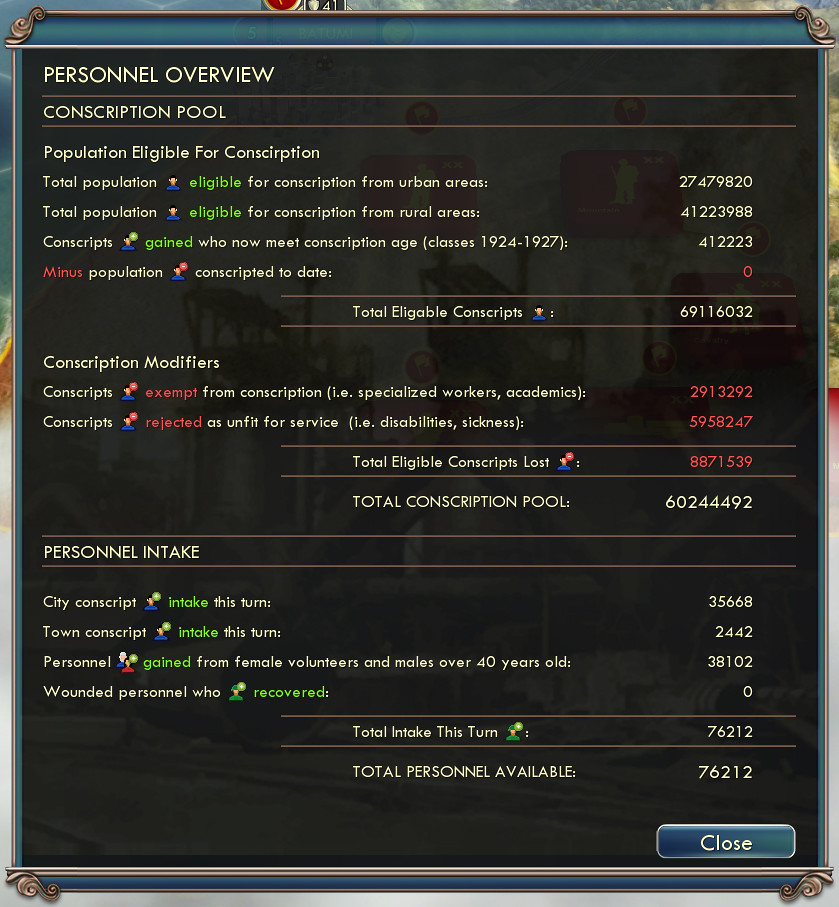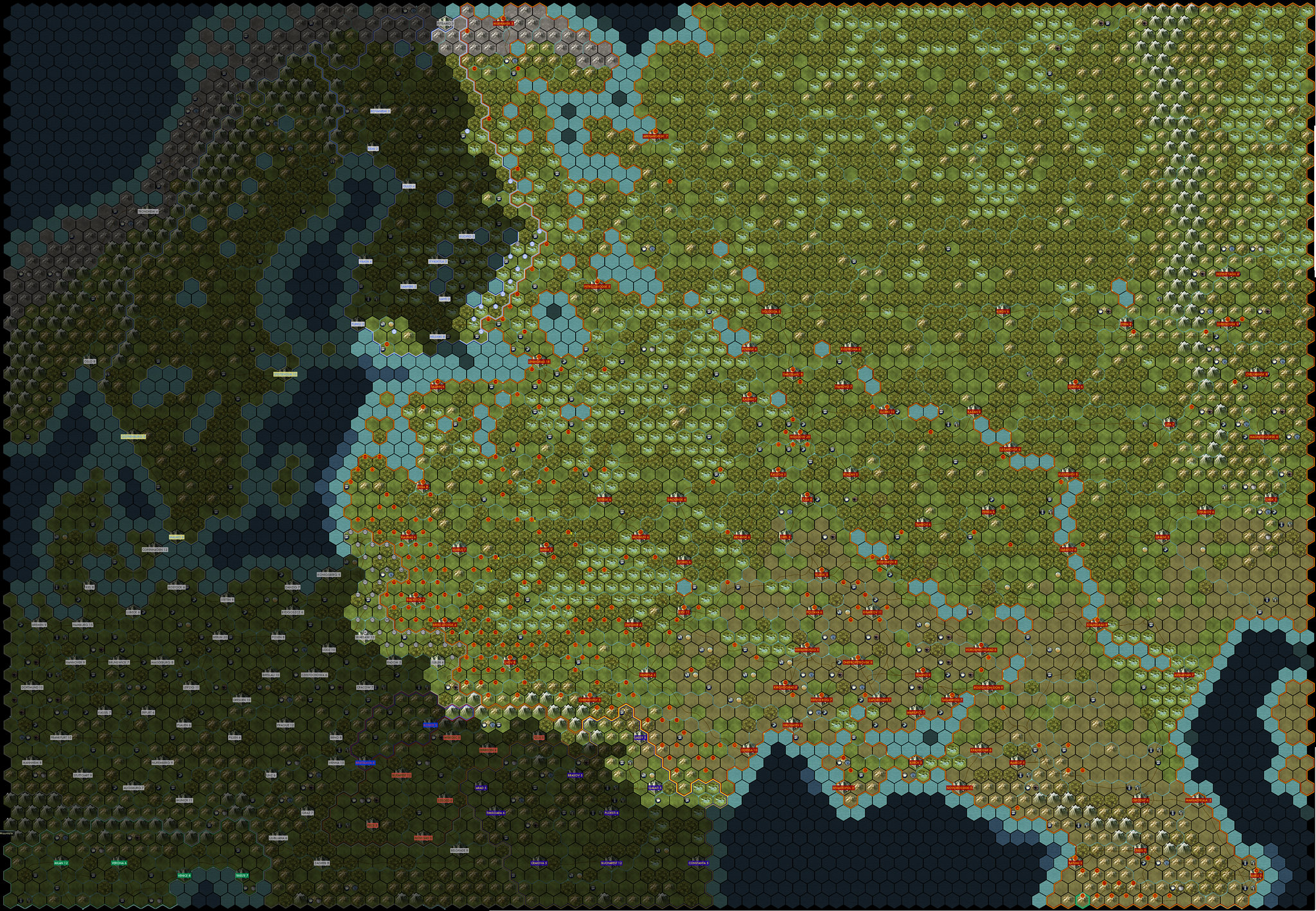thanks for the head up, something is better than nothing my only remark so far is that Kiev (& Gomel of course) seems to me something like 4 tiles too much to the West, maybe you were loosing space there for other cities, most of the maps I've seen put Kiev pretty much due North of Odessa.
Short Answer: The map has been designed with the scenario in mind as opposed to true scaling.
Long Answer:The map has a slight curvature applied which pinches the top portion of the map to reduce dead space in the Urals area and ensure a usable portion of the Murmansk region is include (you will note the slight compression in this area of the map).
However I will admit that the lower portion of the map (Italy, Caucasus and Southern Ural regions) have retained more of their flat map positions to ensure vital cities are on the map and not offset further east (or south in Italy's case) which would then mean further expanding the map...and more Ural/Siberian dead space!
Applying the rivers on the map also allowed me to gauge roughly the right positions using the hex map system.
As a side note, if you look at maps from other games such as 'War In The East', the hex grid has been applied onto an accurately drawn map and thus tends to be spot on.
We modders, unfortunately, have to do things in reverse by drawing a real map onto a restrictive hex grid which tends to throw things off. This means some creative licensing must be applied

.
I think you choose a good span of the main action, only I don't know how USSR will regain strength once Germany corner their forces to the front line during 1941, there will be not much territory for recovery as happened for real.
If you look at the screenshot you will notice all those Red Army units. Those are actually ALL the units (at a divisional level) that were on the East front during Operation Barbarossa...and there is no 2UPT for the Red Army units!
As you can see, there is a lot of space to defend...thus space is not actually limited but a burden to defend for the Soviet player. The Petrozavodsk-Kaluga-Voronezh-Rostov is huge 44 tiles long which I don't expect the player to be capable of defending. River crossings, forests/swamps and towns are your best-friend on this map. Creating strategic choke-points is key to winning just like the real war.
From a historical sense, the Ukraine, Belorussian and West Russian areas were the most vital and did indeed cause a manpower/resourcing issue when captured by the Axis, and this in turn will be emphasized in my scenario.
The way to get around these limitations is to evacuate industry, rebuild your resource base and re-capture lost territory . The myth of the huge Red Army horde is not quite correct (especially in 41-42) as the Red Army had to fight mostly with units that were divisional only in name and not size.
The whole war is a complex series of parameters and events which I am trying to (slowly) breakdown and re-engineer into workable game rules.
Thanks for the feedback





 my only remark so far is that Kiev (& Gomel of course) seems to me something like 4 tiles too much to the West, maybe you were loosing space there for other cities, most of the maps I've seen put Kiev pretty much due North of Odessa.
my only remark so far is that Kiev (& Gomel of course) seems to me something like 4 tiles too much to the West, maybe you were loosing space there for other cities, most of the maps I've seen put Kiev pretty much due North of Odessa.
 .
.
 ). As I progress I am noticing more and more errors in my original map that I am glad I have resolved.
). As I progress I am noticing more and more errors in my original map that I am glad I have resolved. (Maybe most people prefer to browse by rather than comment
(Maybe most people prefer to browse by rather than comment  ).
).
 We've all been there though
We've all been there though